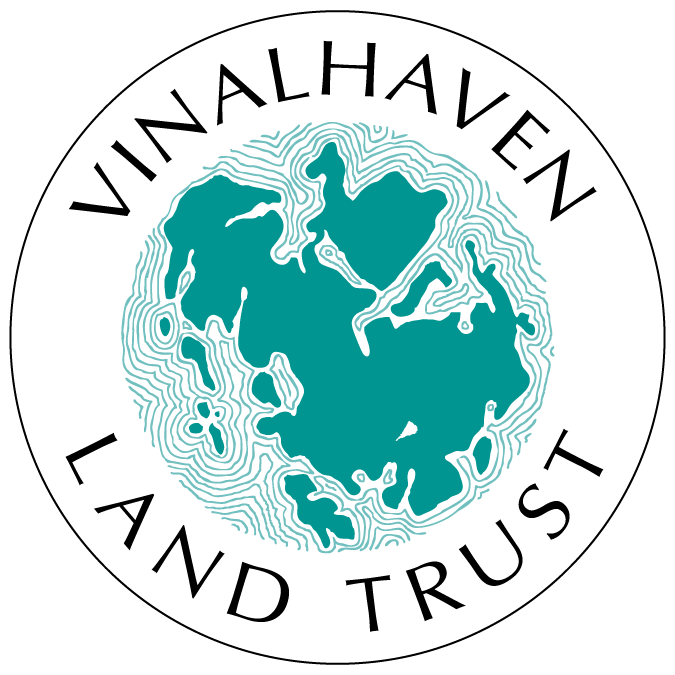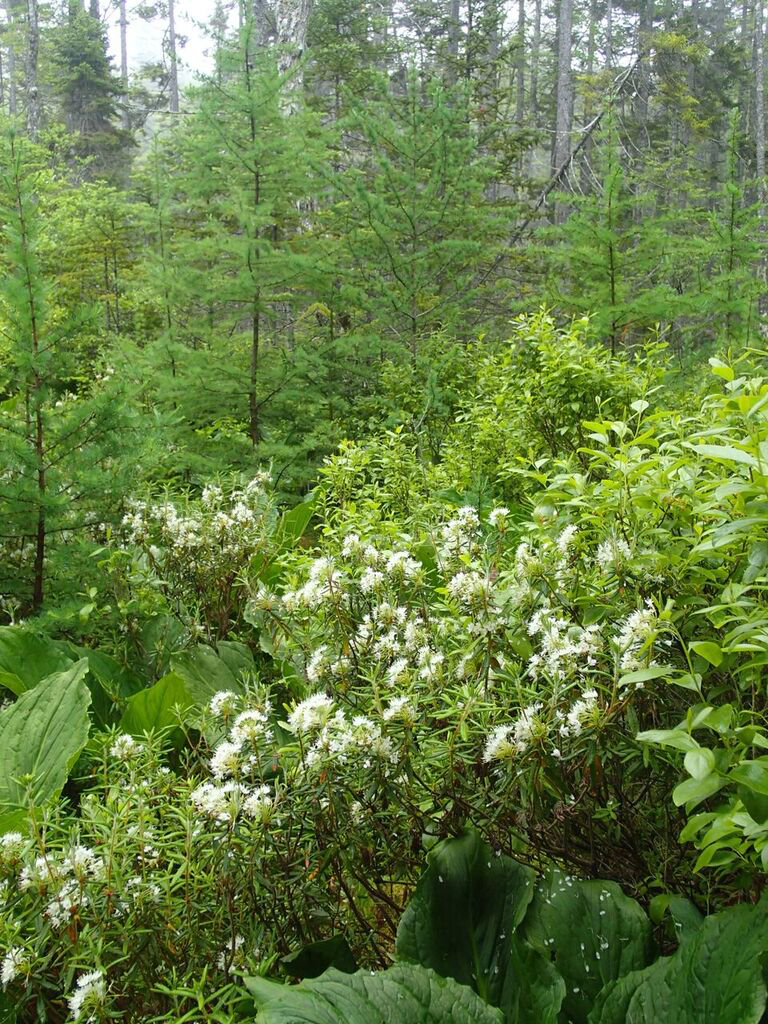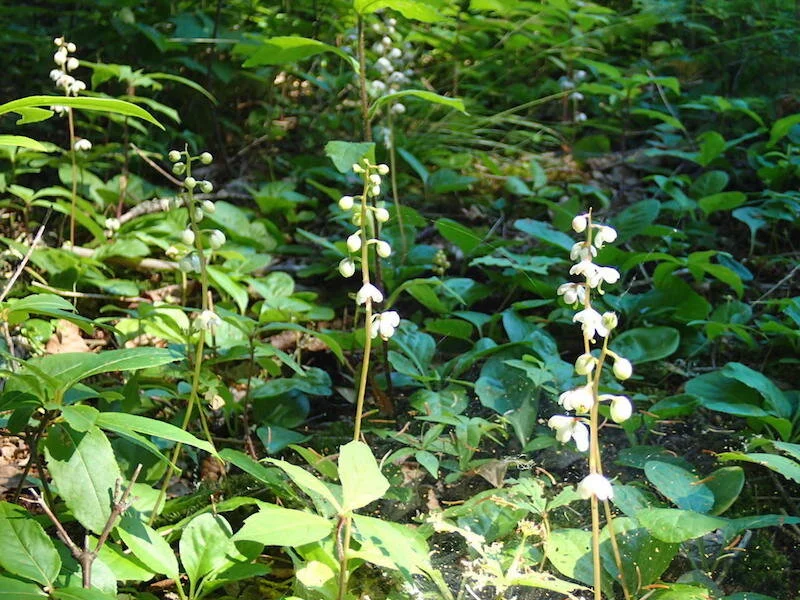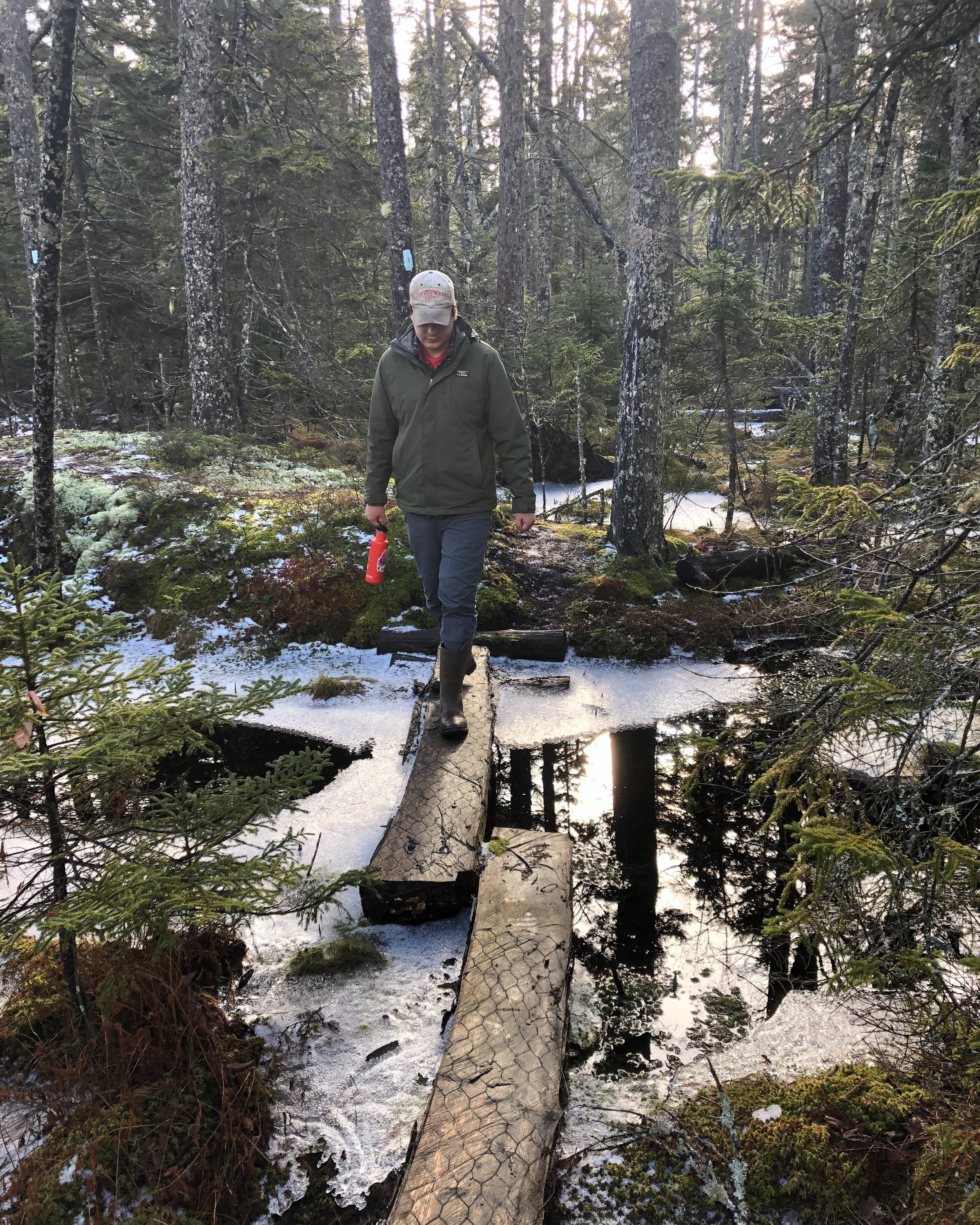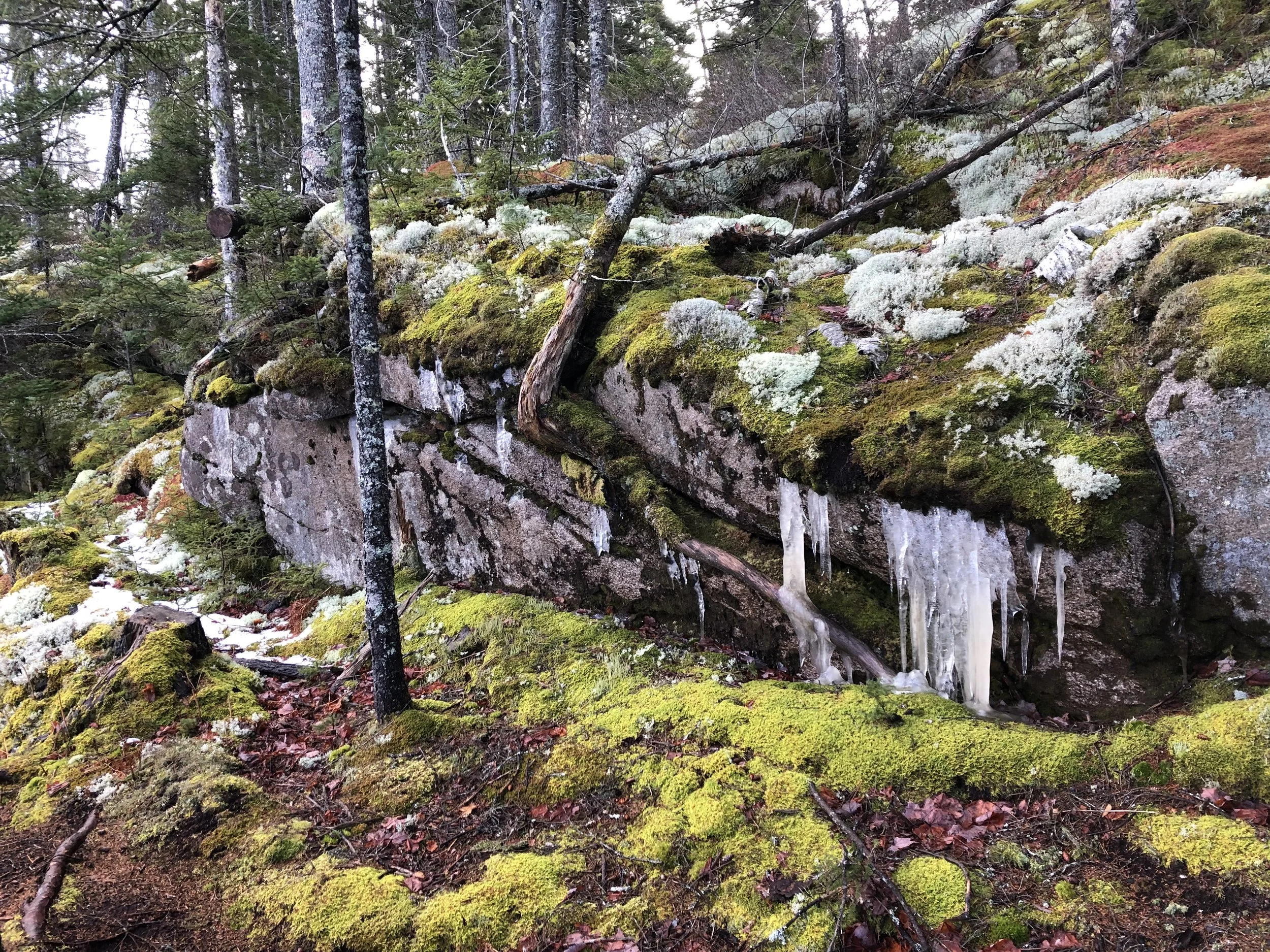Marcuse Wetlands Preserve
Marcuse Wetlands Preserve brochure
Size: 45 acres, approximately 15 acres of which is wetland.
Trails: 0.6 mile Loop Trail, with 0.2 mile Spur across wetland.
Features: Forested trails with benches at scenic overlooks of wetlands, timber bridging providing access to center of wetland, remnants of a very early homestead.
Be Aware:
Foot traffic only
Poison ivy in Preserve, but none near trails
Hunters may be present during hunting season
Directions: From the ferry terminal, go left on Sands Road for 0.4 miles, then right on Old Harbor Road for 0.3 miles, then bearing slightly left onto North Haven Road for 2.5 miles. Bear left at the intersection with Calderwood Neck Road, staying on North Haven Road for another 1.8 miles. Parking for the Marcuse Wetland Preserve is on the left, at the foot of a steep hill just beyond the windmills.
Club-spur Bog Orchid, photo by Kerry Hardy
History
In 2008, Drs. Donald and Julie Marcuse made a gift of this 45-acre parcel to Vinalhaven Land Trust. Trails and bridges were developed during the summer of 2017.
Natural Resources
VLT is deeply indebted to our longtime friend and member Javier Peñalosa for his detailed 2010 report on the physical characteristics and plant communities of the Marcuse Wetland Preserve. From his work, we know that over 240 species of vascular plants, mosses, liverworts, and macrolichens can be found on this property. This high level of species diversity is due to the large freshwater wetland that occupies roughly a third of the preserve.
Marcuse Hike with Nathaniel Wheeler, photo by Norbert Leser
Features
After an opening section of trail that showcases wet-loving flowers like wild violets, blue flag iris, dewberries, pink steeplebush, and Jack-in-the-Pulpit, visitors can walk on a long stretch of log bridging through a wooded freshwater wetland, surrounded by sheep laurel, cinnamon fern, skunk cabbage, black spruce, tamarack, and many varieties of sphagnum moss; with occasional cameos by flowering bog orchids and callas. This wetland forest has grown on top of a filled-in peatland, with peat depths of greater than six feet.
Two benches placed at panoramic viewpoints along the way offer pleasant spots to watch for birds and other wildlife—sit for a few minutes, and you may hear bullfrogs pumping away out in the wetland, and may be lucky enough to see herons or bitterns hunting them, or the waving flag of a white-tailed deer bounding into the safety of thickets of winterberry and mountain holly.
Leaving the lowest portion of the property, the trail climbs quickly up over bold granite ledges covered with diverse mosses and lichens, and then enters a spruce-fir forest, with larch, red pine, red maple, and both yellow and white birch mixed in. Another section of log bridging crosses a small wetland full of ferns, mosses, and skunk cabbage; then the remainder of the trail is through a series of regenerating clearings in the wake of a 1996 logging operation.
The trail also passes by a very old cellar-hole, which we hope to learn more about in the future. Sharp-eyed observers will spot the rusted remains of an old carriage and other farm equipment in the trailside forest here. Throughout the Preserve, you’ll get occasional glimpses of the nearby wind turbines.
White spruce tree (Picea glauca) The white spruce is a large coniferous evergreen tree which grows normally to 50 to 100 ft tall, but can grow up to 130 ft tall with a trunk diameter of up to 3.3 ft. The bark is thin and scaly, the cones are 1-3 inches long.
Bog labrador tea (Rhododendron groenlandicum) also called Muskeg tea,or Swamp tea. A flowering shrub with white flowers and evergreen leaves, used to make herbal tea. Photo by Kerry Hardy.
Tamarack Tree (Larix laricina) also known as hackmatack, eastern larch, black larch, red larch or American larch. Deciduous conifer tree native to Canada. The leaves are needle-like, about 1 inch short, light blue-green, turning bright yellow before they fall in the autumn, leaving the pale pinkish-brown shoots bare until the next spring. The needles are produced spirally on long shoots and in dense clusters on long woody spur shoots. The cones are the smallest of any larch, less than one inch long, with 12-25 seed scales; they are bright red, turning brown and opening to release the seeds when mature, 4 to 6 months after pollination. Photo by Sherry Rega.
Little club spur bog orchid (Platanthera clavellata) Photo by Kerry Hardy.
White Ash or American Ash Tree (Fraxinus americana) Native to eastern and central North America. Photo by Norbert Leser
